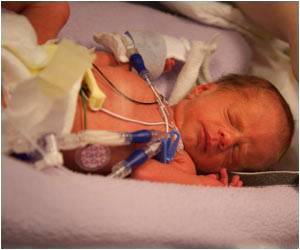The brain is one of the most complex organs, and it controls essential functions in our day-to-day lives. Therefore, any harm or injury to the brain can have lasting effects, and can even be fatal. The infant’s brain is even more susceptible than adult brains, and this is especially the case for preterm infants given the fact that their brains are still under development.
‘First comprehensive transcriptional atlas of neonatal mouse meningeal leukocytes have been generated under normal conditions and after perinatal brain injuries. This highlights the importance of meninges (outer protective 3-layered membrane) for brain development and pathology.
’
The meninges surround the brain and spinal cord of the central nervous system (CNS) to protect neuronal cells from the changeable milieu of the bloodstream by controlling the movements of molecules and cells between the blood and the CNS.
These barriers also ensure that the CNS can be kept under surveillance by certain immune cells while at the same time restricting the access of blood-derived immune cells and molecules to specific compartments at the border of the CNS.
In the new study, published in Genes & Development, the researchers used experimental model and provided a detailed immune landscape of meningeal tissue at early stages of development under both physiological and pathological conditions.
Xiaoyang Wang, Professor at the Department of Obstetrics and Gynecology at Sahlgrenska Academy, University of Gothenburg: “We showed that the neonatal meninges contain almost all known types of immune cells, along with novel immune cell subtypes in the developing meninges that we have characterized for the first time.”
Described for the first time
Together with first author Aura Zelco, a researcher at the same department, Xiaoyang Wang and the other authors, discovered that among the seven main immune cell populations in the neonatal meninges, two immune cell subtypes – named border-associated macrophages and the newly defined meningeal microglia-like cells – might be involved in brain development, a function described for the first time for these meningeal immune cells.
Furthermore, they characterized the potential biological function of all the immune cell populations found in the neonatal meninges through further analysis of gene expression and other characteristics of the individual immune cell types.
According the authors, the strongest point of the study is that they also examined the pathological early immune cell response in neonatal meninges.
They demonstrated that meningeal immune cells in mice participate in the early immune response that not only occurs in adult animals, but also at very young ages that are equivalent to human preterm infants.
For the first time this is suggested as a possible new mechanism for the immune response by one of the earliest inflammatory responders in the neonatal meninges, called neutrophils, after insult to the preterm brain.
To obtain these results, an in vivo mouse model of hypoxic-ischemic brain injury was used, which mimics the lack of oxygen to the brain at birth in human new-borns. To investigate the biological functions and changes of each type of immune cell after hypoxic-ischemic insult, single cell RNA-sequencing was performed, a recently developed technique that allows studying the potential biological function of each type of cell one at a time.
Dr. Aura Zelco explains: “Using this approach, we are able to reveal the potential biological functions of the immune cells and to identify the pathways involved in the changes among different conditions and subtypes. One of the main advantages of this technique is that the data we generated are publicly available and therefore provide a valuable resource for the possible integration and comparison of all data from different age groups. This will facilitate the further understanding of this important brain-border barrier tissue at different developmental stages and under different pathological conditions and will greatly facilitate our understanding of brain function.”
Opens a new avenue
Together with other recent papers that have studied meningeal immune cells at other developmental ages, the current work highlights the importance of the meninges for brain development and pathology and may open up new avenues for revealing the very complicated brain function.
Furthermore, because the meninges lack a blood-brain barrier, the major barrier that prevents solutes in the circulating blood from non-selectively crossing into the extracellular fluid of the brain where neurons reside, immune cells in the meninges might be more easily therapeutically targeted than immune cells in the brain parenchyma tissue itself.
Understanding the precise role of these meningeal immune cells, the signals that control them, and how they contribute to brain injury will therefore open up entirely new avenues for the design of treatments for neurological diseases at different developmental ages.
“The finding opens a new avenue and offers a critical framework for us to better understand the interaction between brain and peripheral immune system for children even at very young age. To further study how the meningeal immune cells contribute to early brain development and disease pathology, will provide exciting new possibilities for identifying attractive therapeutic targets for brain disease in children”, Xiaoyang Wang concludes.
Source: Medindia



